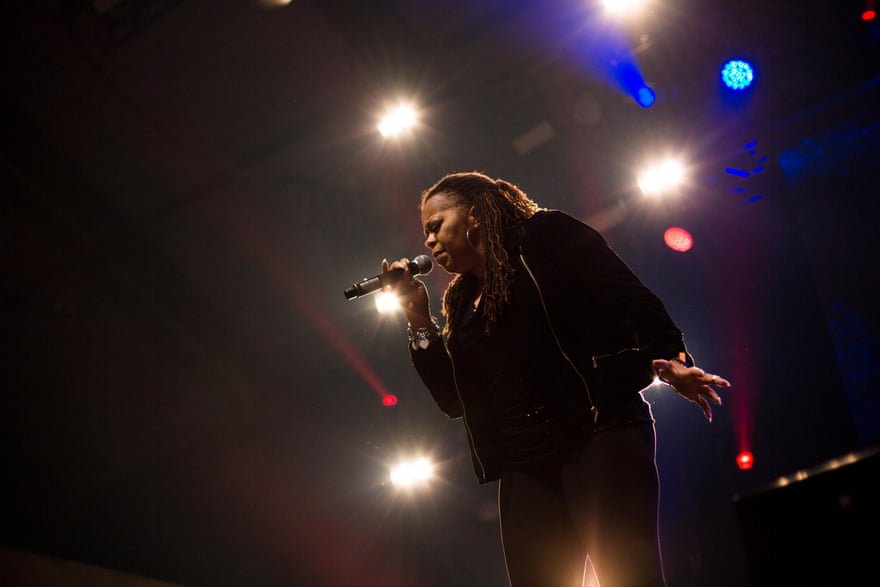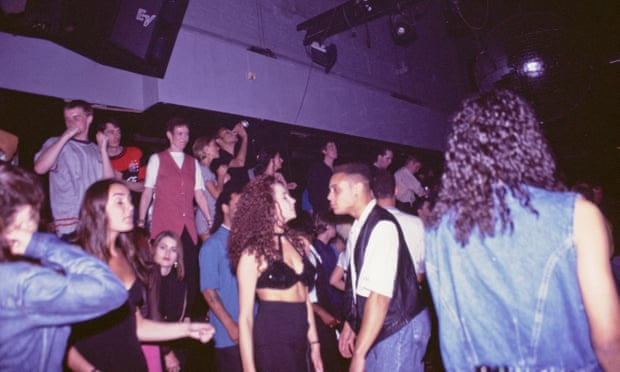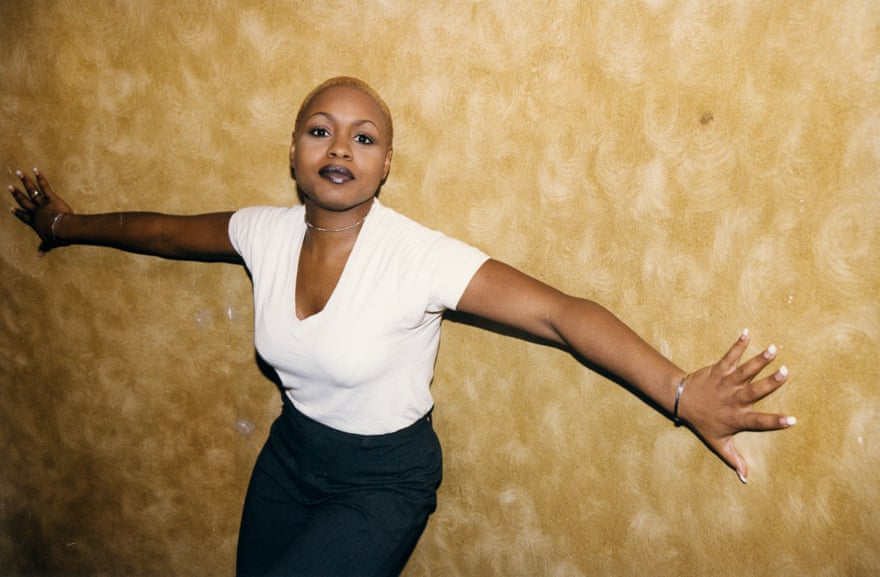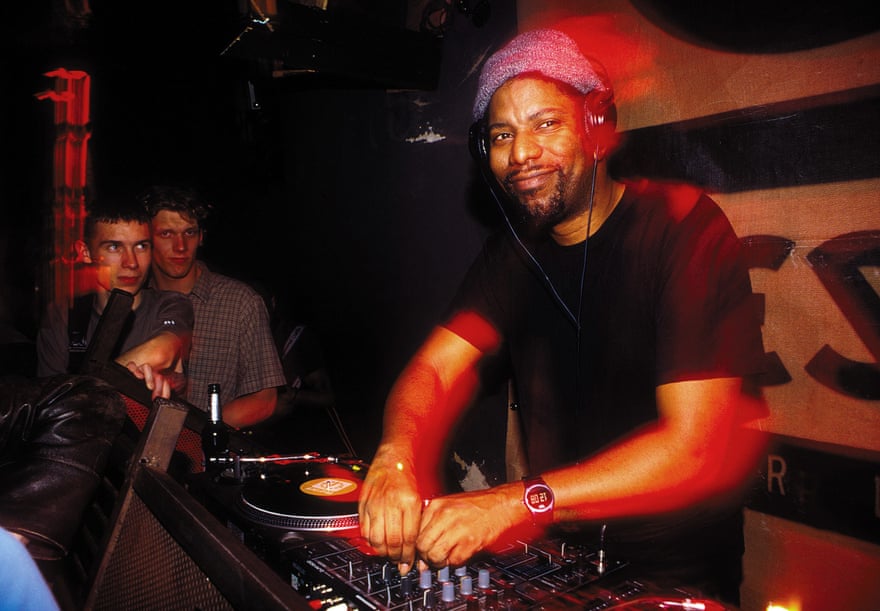“It was a few weeks back, late at night, I’m in bed, and my phone started pinging,” explains Robin S, the powerhouse vocalist behind Show Me Love, one of the most successful house records ever made. “I stayed half asleep. Then very early in the morning, my son called. I said: ‘Son, I love you but why are you calling me at this time?’ He said: ‘Mom, you’ve got to answer your phone, you’ve got to look at the news – you’re trending all over the place.’”
Robin’s phone was buzzing because Beyoncé had dropped her song Break My Soul at midnight, and it sounded a lot like Show Me Love (Beyoncé credited Show Me Love’s writers Allen George and Fred McFarlane as co-writers). That was just the beginning: it turned out her entire album Renaissance would be an homage to classic vocalists such as Robin , as well as queer cultural highlights (the ballroom scene), produced in collaboration with such dance stars as DJ Honey Dijon and the Chicago producer Green Velvet. Once again, it was the summer of house – only this time it had gone from global dance subculture to the sound of the mainstream.
When house first broke, nearly 40 years ago, the genre seemed to offer a temporary release, rather than longer-term liberation. Yet today it’s clear that the music, which used affordable technology to rework disco, provided a much longer lasting voice to queer, Black and marginalised musicians, DJs and club goers, first in the big cities of the American midwest, then across the world.
From Chicago to New York, Manchester, London, Tokyo, Paris and Berlin, house seeded local scenes and reshaped pop. UK garage, Dutch trance, the Afrobeats of Ghana and Nigeria, Psy-era K-Pop, and Brazilian brega funk all demonstrate how the legacy of house music lives on.
House’s accompanying club culture also changed social orders and leisure spaces, turning parking garages, warehouses, bus depots and department store basements into desirable weekend destinations, while elevating young suburban tearaways from Hayes, Cheadle Hulme, Long Island, Newark and the Jersey Shore to positions of high cultural and social influence.
Now even music’s biggest stars have paid tribute to house music pioneers. As well as Beyoncé Drake’s seventh album, Honestly, Nevermind, draws on contemporary dance music sub-genres such as Jersey club, Baltimore club and South African amapiano; and Kanye West’s eleventh LP, Donda 2, draws on the genre in a more veiled manner. Then there’s Lizzo’s single About Damn Time, which sounds like an early 2000s French touch house cut; Megan Thee Stallion’s track Her, from the album Traumazine, which could pass for a dark, late 90s garage beat; and in the wings, we have Frank Ocean, who’s rumoured to have drawn upon house and techno for his forthcoming album.
What do house’s founders think about these new occupants? We spoke to some of its stars, including Jesse Saunders, the creator of the first commercially released house record; the Ten City pioneers Byron Stingily and Marshall Jefferson; and some of the genre’s biggest vocalists, Robin S and Ultra Nate. Here they recall how they made those early records, reflect on their own legacy and this latest resurgence, and (largely) welcome these prominent new figures into the house they built.
Robin S: ‘People say your song saved my life’

Robin S is the vocalist on the early 1990s house anthem Show Me Love, which Beyoncé interpolated on her single Break My Soul.
I used to love to dance music. I grew up in Queens and I used to go to clubs there and in the city. I was a big fan of Adeva, and I loved that song Big Fun. If it comes on, to this day, I’m on the floor.
When I first heard Show Me Love, I almost turned it down; I didn’t feel like the right person to handle the song. I hadn’t really sung that much dance music before that point. The closest I had come was singing covers of Don’t Stop ’Til You Get Enough and Donna Summer’s Last Dance; I really didn’t have a point of reference.
They [the songwriters Allen George and Fred McFarlane] asked me to listen to the song again, so I went home, put my kids to sleep and made myself pay attention to the words. “Heartbreaks and promises, I’ve had more than my share?” Of course, everyone has experienced that. I realised the song is about real love.
“On the day we recorded it, I had the flu. It was a Saturday afternoon and I was very sick. I didn’t want to renege on my promise to sing, but I really wanted to get it over with.
I improvised that long opening note on the spot. It was not part of the song, but I felt like the song needed an opener.
It wasn’t until the song was out that I learned to love it. I’ve had women come to me, particularly full-figured women – because I’ve always been full-figured – and say “Your song has saved my life. I didn’t think I had anything to offer anyone. You spoke to me and it gave me meaning.” I’ve had LGBTQ [kids] come to me and say ‘I came out on your song. I didn’t have to explain anything to anyone.’
At that point it didn’t matter what the song did or didn’t mean to me. I knew the song was bigger than who I am. I’m the messenger and I had to give the message in the best way I can.
I love the people that I perform in front of. There’s generations! It’s not only people my age, there are kids age five and they’re mouthing the entire song. That’s powerful. I’m just really thankful and grateful.
Beyonce’s Break My Soul is a wonderful homage. Mostly, when people want to pay tribute to your songs, you’re no longer on this earth, you’re gone. I’m thankful that I got my flowers while I’m still alive.
In fact, Beyoncé sent me some real flowers – white roses, and all kinds of other white flowers. The message in the card was beautiful too, about being an inspiration. I don’t know if you can get better than that? Well, maybe being onstage with her, but that’s her decision. Still, never say never?
Jesse Saunders: ‘House music offered a safe space for Black and gay people’

The DJ and producer is widely credited with creating the first commercially released house record, On And On, in 1984. He also produced Love Can’t Turn Around with Farley ‘Jackmaster’ Funk
It’s interesting when people talk about a sudden, renewed interest in house, because millions of people all over the world enjoy house, and have for a long time!
A friend sent me Drake’s album and I was like “Why? I don’t listen to Drake.” My initial reaction to that record was not very good, but I got into the later tracks a little more, they’re really well produced.
Then I heard Beyoncé’s track. It’s nice that she’s trying to do something in that genre.
Some people were being quite critical, but I see myself as more of an ambassador. One of the things I’ve always tried to stress is that house music offered a safe place for Blacks, gays, and people who were different. We are tolerant and we must remain tolerant. Everyone is welcome in our house – we’re not going to kick Beyoncé out for trying to do something that we love so much. That’s the whole idea of what house music is; it’s love and understanding. That’s the theme of every house record with a vocal on it.
Chicago was pretty segregated back then. New York people mixed and mingled, Chicago people didn’t so much. The Playground [the early Chicago house club Saunders ran] was one of the first places in the city where you’d get straight kids, the gay crowd, all these people came together in one place, and it was really interesting.
That said, most of our crowd were straight kids from well-to-do families. And house music was a Black thing. It’s really weird that people come up to me who say “I didn’t know Black people like house music” because that’s how it began.
When I made the first house record, [On and On], I was really trying to replace a record stolen from me at the Playground. I have no idea who stole my records.
The record I really missed [Funky Mix / On And On by MACH]became my signature record. When it went missing, I made my own version. I think that was the spark that lit the fire. People would say: “Hey, Jesse is a DJ and he made a record; I’m a DJ, maybe I can make a record.”
A couple of years later, when Love Can’t Turn Around [with Farley “Jackmaster” Funk] came out, we did a 16-date tour of the UK. It was incredible. We played the London Hippodrome, and to a huge crowd on Barry Island in Wales, which reminded me of Woodstock or something. I had never been to the UK before, and seeing the enthusiasm was great. I wish I could go back to that time.
The best thing about house in the early days was when people finally got it, when they realised they didn’t have to listen to the radio and commercial music any more.

Byron Stingily: ‘House music broke down barriers’
Byron Stingily is a singer-songwriter and lead vocalist in the seminal Chicago house group Ten City
There was a time when disco had ended, but people still loved to dance. Kids were going to these underground parties. They started to call it house, because it was the music that Frankie [Knuckles] played at the Warehouse, but some people called themselves box-heads because of the music [the DJ and house pioneer] Ron Hardy was playing at the Music Box.

I played in a lot of New Wave bands; we liked Yazoo, and people were trying to dress up like A Flock of Seagulls. It was a fun time to be a teenager.
I remember Jesse Saunders said: “You’re always playing in bands, you can sing – we need to take this house music to the next level.”
At the time, I loved the music, but I thought club music was faceless. It didn’t offer me the potential to reach the masses with a big hit.
However, I was also working at a record distributor and I could see we shipped house records to Washington DC, Baltimore, Philadelphia and New York. I started to realise those places had a scene. Then stores in England such as [the London record shop] Black Market would call and ask for Chicago records, and we started to move a lot of records to the UK.
Then two records, Love Can’t Turn Around and Jack Your Body, went top 10 in England; then it was like: “OK, we’ve got something here.”
In May 1987, I went to New York with Marshall Jefferson when he performed Move Your Body at the Paradise Garage. The crowd went completely insane. We were leaving, and we heard Move Your Body on the radio in New York – not even in the mix, on regular radio. I said, “Let’s call up major labels, this could be something really big.” In the end we got a deal for me and CeCe Rogers and I didn’t even have a demo. Atlantic Records said they’d sign the next record we did, and the next record we did was Devotion.
Marshall wanted to call the group Intensity, but I thought that was corny. I said, “Let’s take the ‘in’ off, and call it Ten City … and it’s going to be this perfect city, where everyone comes together in love and harmony.”
You see, Chicago is perhaps the most segregated city in the world. I grew up in a Black neighbourhood; all you saw was Black people. But Chicago has an Italian neighbourhood, a Lithuanian neighbourhood, an Indian neighbourhood, Chinese, Japanese, Mexican neighbourhood.
But when you went to a house club you saw everyone. House music broke down a lot of barriers.
I think if Drake and Beyoncé are making house, this is going to make the music more popular with the kids. So maybe Migos or Cardi B might say: “I want to do a house record.” Then, for someone like me, who has hundreds of songs published, it might increase the value of my catalogue.
ULTRA NATÉ: ‘It was escapism’

Ultra Naté is a singer-songwriter and DJ who in 1997 scored a UK top five and Billboard Hot Dance Club number one with Free. This July, she performed at the Women’s Euro 2022 Final at Wembley
I absolutely remember the first place where I heard house music. I was still in high school, and I went to a club in Baltimore, where I lived, called Odell’s – its tagline was “You know if you belong” – and it had this amazing sound system. You would feel it in your body because the sound system was so thunderous, warm and resonant. It was a communal experience, a place where people went to escape the struggles of their daily life or be accepted by a group that was inclusive of everyone. A sanctuary at the weekend. It was escapism. It was freedom. It was our church.
You would hear R&B, disco and things that went beyond that too, into the alt-rock and new wave sounds at the time. But there was also the burgeoning sound of what was the beginning of house music, which was kind of an amalgam of all this music but done in a very minimal style. Technology was coming in that allowed new, young DJs to start putting beats, samples and ideas together on basic four-track recorders. In New York, Chicago and Baltimore, it was just our own world, but we were creating this storm. Suddenly, the rest of the world – and mainly the UK – started looking at what was happening in this underground scene and embraced it fully, giving it a commercial platform.
On my first trip to the UK after signing my first record deal, I remember landing at Heathrow and there were billboards of Adeva everywhere. She was one of the divas of our underground and there would never have been posters of her [in the US]. I just said to myself: “Dorothy, I’ve a feeling we’re not in Kansas anymore!”
This year is the 25th anniversary of the release of Free but I’ve just released my 10th album. I still believe in this music, in this scene. I still believe that any moment, anything can happen. I’ve heard bits and pieces of the Beyoncé album. In the music scene, there’s always a cycle. Something always comes in vogue again. The next generation will suddenly pick up things and repackage it and resell it to a new community of people. When it comes to Beyoncé, it’s so polarising when you hear people talk about the album. And I get both sides of that coin.
The album is built on the familiarity of samples, stories and sounds that we grew up on and created in those early days. Beyoncé is a huge machine. She can make any album she wants, and it’s already going to be winning. No one’s in love with the idea that she’s saving house music or whatever.
But I get that it’s opening ears to those who have had no relationship with this culture and these sounds. Just like the day I stepped into a club and heard it for the first time, which changed the trajectory of my life, maybe hearing Beyoncé will be a catalyst for others. The trickledown effect could create opportunities for people to open themselves up to other artists who are genuinely, certifiably, from the [house music] scene.
MARSHALL JEFFERSON: ‘None of the gangsters would come to house music parties’

The legendary Chicago house producer created one of house music’s most influential records, Move Your Body. He tours the world today as a DJ
The first time I remember hearing house music was at the Music Box in Chicago [in the early 1980s]. The Music Box was like being in a totally different world. It was heaven for me.
‘House’ music at that time meant stuff from Philadelphia, New York, even Italian stuff. There was a lot of European influences. Everything was played on the one dancefloor. The Eurythmics’ Sweet Dreams was huge. I even remember The Look Of Love by ABC being played by Ron Hardy.
In the beginning it was Black music [being played], but a lot of New Wave too. You’d have 5,000 Black kids on the dancefloor dancing to Rock Lobster by the B-52s and music by Liaisons Dangereuses [the avant-garde German electronic act]. The weirder, the better, because the purpose of house music at that time was to keep the gangsters out of the clubs. We found out early on that if we said it was a house music party, none of the gangsters would come because they thought it was a gay party, as Frankie Knuckles DJed at the Warehouse – and that was a gay club.
When Jesse Saunders came out and made On and On, everybody said: “I can make a record, too.” That was the thing that set me off. I was working at the post office, so I could afford equipment. There was a music store called the Guitar Center in Chicago. The salesman there told me: “This is a Yamaha QX-1. With this, you can play keyboards like Stevie Wonder, even if you don’t know how to play.” I said: “Wow!” They gave me a $10,000 credit line. When I took all this equipment home, my friends were laughing at me. But I wrote my first song two days after, and a year and a half later I put Move Your Body out – and DJs soon began hiring keyboard players to play piano like Marshall Jefferson.
I just wish there weren’t remixes. That cheapened the music and led to major artists getting it all on the cheap. I’m working on an album now but I’m under pressure to let other people remix it, which takes 70% of the soul out of the record. The reason why I’m against it is that if a white person does it, they can do the exact same music as what I’m doing now and people say: “Hey, that’s cool. That’s old school.” But when I do it? “Nah, you gotta update that.” I could make an album exactly like Daft Punk and it wouldn’t get played. They’d say: “It’s not hip.” It’s really frustrating. There’s a lot of pressure to sound like people that are copying off me – badly.
I’ve got no problem with people like Drake and Beyoncé making house records because every time somebody does something like that, it eventually comes around to people like me – the experts. A lot more high-profile artists are now reaching out. You want to get it done right? You want it authentic? See me.

